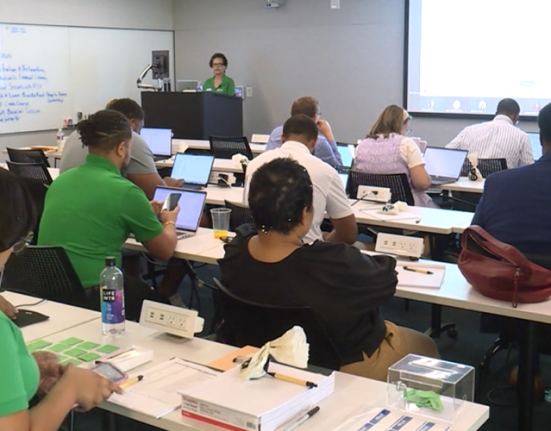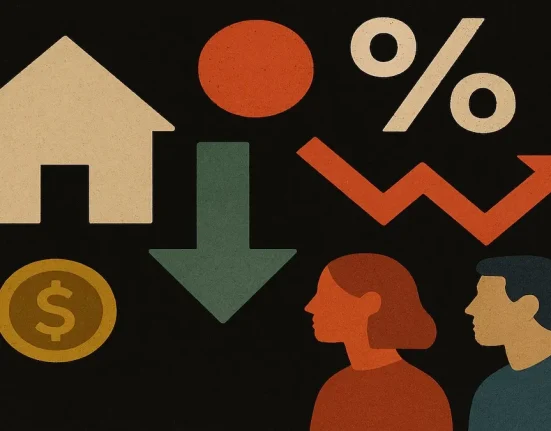

As we close out the first week of June 2025, the U.S. housing market continues to send mixed signals. Mortgage rates moved modestly but ended the week slightly lower, while buyer demand remained tepid. Inventory is rising nationwide, reshaping negotiations and hinting at a potentially cooler summer.
Mortgage rate snapshot: Where we stand now
Mortgage rates fluctuated day-to-day, but the broader trend was a slight decline. According to Zillow, the average 30-year fixed mortgage rate ended the week at 6.94%, down from 7.01% at the beginning of the week. The lowest point came Thursday, when rates dipped to 6.87%, offering a window of opportunity for borrowers.
- 30-Year Fixed: 6.94% (↓ 0.07%)
- 15-Year Fixed: 6.00% (↓ 0.06%)
- 5-Year ARM: 7.46% (↓ 0.08%)
Despite the drop, affordability remains a challenge, especially with home prices still elevated in many areas. Refinancing activity remains limited, but slightly more buyers may have entered the market when rates dipped midweek.
Lenders also continue to tighten credit requirements, further dampening demand from marginal buyers. First-time buyers, in particular, are finding it harder to qualify or secure affordable monthly payments.
Buyer demand cools, inventory climbs
Across the country, buyer activity has dropped significantly. The Mortgage Bankers Association reported a 39% decline in purchase applications compared to this time in 2019. Refinancing is also down nearly 80% from three years ago.
Meanwhile, listings are rising:
- National inventory is up 20.8% year-over-year, though still below 2019 levels.
- Denver saw the highest inventory since 2011.
- Miami-Dade inventory surged 43.3% year-over-year.
But many homes are sitting longer. In April, 44% of listings were on the market for 60+ days, the highest rate for any April since 2020.
Price cuts are becoming more common, particularly in overbuilt metros. More sellers are offering incentives—such as rate buydowns, closing cost assistance, or renovation credits—to attract hesitant buyers.
The biggest buyer-seller gap on record
According to Redfin, the U.S. is experiencing its largest-ever gap between active sellers and buyers. There are about 1.94 million sellers and only 1.45 million buyers, a 33.7% difference—the widest margin since 2013.
Some sellers are clinging to pre-2023 price expectations, while buyers are holding out for discounts. This stalemate is forcing more price cuts and stale listings, particularly in oversupplied metro areas like Miami, Austin, and Las Vegas.
In some regions, sellers are delisting homes entirely and choosing to rent them out instead, further distorting supply metrics.
Regional trends: Where prices are rising (and falling)
The U.S. housing market is fragmenting into two camps: Appreciating and depreciating metros.
Markets with year-over-year price growth (May 2025):
- Miami, FL: +9.4%
- Austin, TX: +7.2%
- Charlotte, NC: +6.8%
- San Diego, CA: +6.3%
- Tampa, FL: +5.7%
Markets with year-over-year price declines:
- Boise, ID: –3.1%
- Phoenix, AZ: –2.4%
- Salt Lake City, UT: –1.8%
- Las Vegas, NV: –1.2%
In the West and South, oversupply and affordability issues are cooling demand. Meanwhile, limited inventory and strong job markets are sustaining prices in parts of the Southeast.
In fast-growing metros like Charlotte and Tampa, local economies are continuing to attract new residents, keeping demand somewhat resilient despite high rates.
New construction trends
Homebuilders are adjusting to the market, with many focusing on smaller, more affordable homes to appeal to rate-sensitive buyers. Starts for single-family homes have remained flat, but completions are up, adding to overall inventory.
Builder incentives are common in newer subdivisions—ranging from below-market mortgage rates to bonus amenities. Some developers are even partnering with local governments to offer subsidized housing.
What to expect next week
With the Fed’s next policy meeting approaching and inflation data due out mid-June, volatility is likely to continue. Analysts say rates could continue trending down modestly if inflation cools further.
Expect new data on consumer sentiment, builder confidence, and regional price trends in the coming days. These indicators will help shape expectations heading deeper into the summer.







